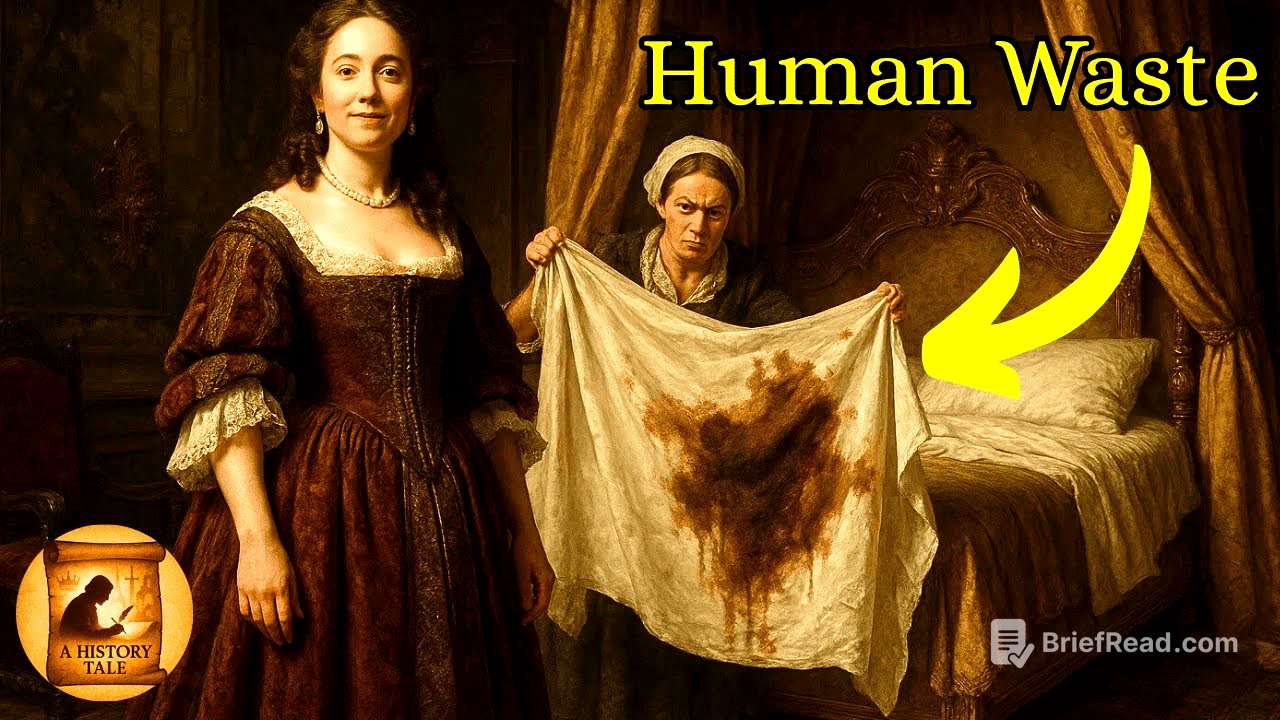TLDR;
This video explores the shocking hygiene habits of royal women in 17th-century France, revealing a stark contrast between their public image of grace and the unsanitary realities they endured. The key points covered include infrequent bathing due to the belief that water was harmful, the lack of proper toilets leading to unsanitary conditions in palaces, the lice-infested wigs and hairstyles, the contaminated food in royal kitchens, and the public nature of childbirth.
- Infrequent bathing due to the belief that water was harmful.
- Lack of proper toilets leading to unsanitary conditions in palaces.
- Lice-infested wigs and hairstyles.
- Contaminated food in royal kitchens.
- Public nature of childbirth.
Infrequent Bathing [0:44]
In 17th-century France, noble women were expected to be graceful and fashionable, but their personal hygiene was shockingly poor. Bathing was avoided because doctors believed warm water opened pores to disease, and the church condemned it as vanity. Instead of bathing, royal women would wipe themselves with damp cloths moistened with alcohol, vinegar, or even saliva. Bathing was a rare, communal event, with men using the water first, leaving it dirty and lukewarm for the women. The lack of bathing contributed to a pervasive stench in palaces like Versailles, a mix of old perfume, body odour, animal fat, and mildew.
Lack of Toilets [3:06]
The Palace of Versailles, despite its luxury, lacked proper toilets. The royal court relied on chamber pots, which were often emptied out of windows. Some courtiers even urinated off balconies or in the gardens. The palace was infamous for its stench, with corridors doubling as toilets. A royal decree in 1715 ordered the palace corridors to be cleaned only once a week. Toilet paper didn't exist; people used cloth scraps, leaves, or their hands, with minimal washing afterwards. This poor waste disposal led to rampant parasites and disease.
Lice-Infested Wigs and Hairstyles [5:00]
Royal women's hairstyles were elaborate, towering structures adorned with ribbons, pearls, and even miniature ships. These styles were achieved by stuffing hair with wire frames, horsehair, and padding, then applying pomade made from animal fat. The grease attracted lice, which thrived in the unwashed hair and wigs. Lice infestations were common, and women used special long-handled silver lice claws to scratch their scalps discreetly. Despite the discomfort, maintaining fashionable appearance was crucial for status at court. Wigs were heavy and dangerous, causing neck pain and catching fire, but were a necessary burden for noble women.
Contaminated Food in Royal Kitchens [6:57]
Royal banquets featured lavish displays of food, but the kitchens suffered from sanitation issues. Poor plumbing caused raw sewage to back up into cooking areas, and waste water even reached Queen Marie Antoinette's private kitchen. Without proper refrigeration or ventilation, food spoiled quickly, and pests roamed freely. Cooks served potentially hazardous meals, leading to widespread gastrointestinal distress, including diarrhoea, vomiting, and parasitic infections. Even King Louis XIV is said to have passed a 6-inch long tapeworm. Royal women had to maintain an elegant facade while battling nausea and illness.
Public Childbirth [8:43]
Childbirth for royal women in 17th-century France was a public event. The delivery room would be filled with courtiers, doctors, priests, and noble observers to prevent scandal related to the heir's legitimacy. The mother, in pain and distress, had no privacy or dignity. Marie Antoinette famously passed out after giving birth due to the heat and crowd. Childbirth was unsafe, with high mortality rates for both children and mothers due to limited medical knowledge and unsterile conditions. The emotional toll on women was immense, as they had to bear children under constant surveillance and threat.









